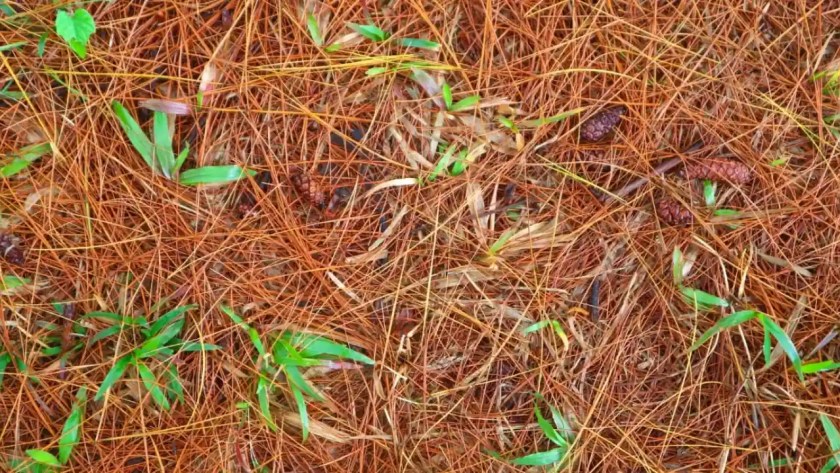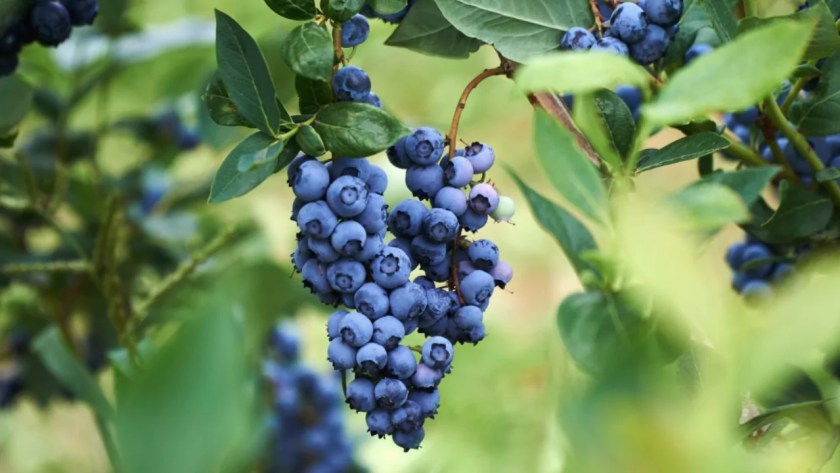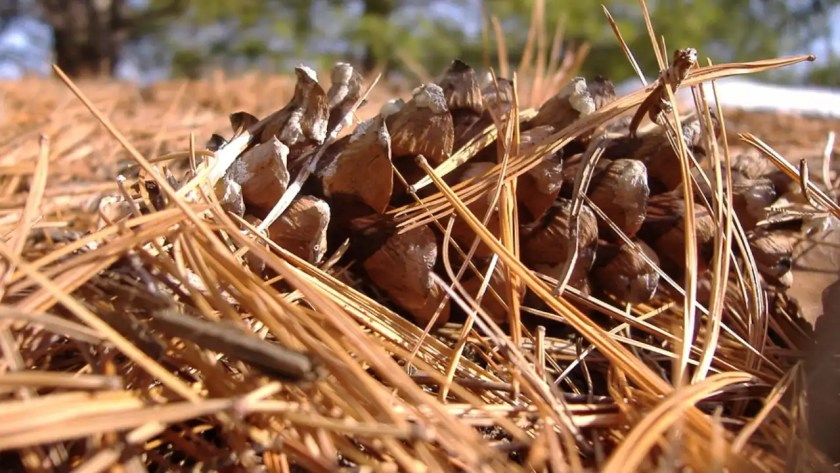Pine needle mulch could be what you’re looking for if you’re in the market for a long-lasting, low maintenance mulching option. Plus, keep in mind pine straw melts into the ground, so it’s kind of just free.
It’s not quite as popular as other types of organic mulch, but its getting more popular.
However, before you get too carried away and put it all over your garden, here is what you need to know before you use it.
Pine Needles – Nature’s Own Mulch

Mother Nature – she really understands what she is doing!
While those pine trees are dropping their needles to give us all the cover on her soil to suppress the weeds and make the soil slightly acidic (which pine trees enjoy).
The pine needles on the ground also provide insulation for the plants, and reduce moisture evaporation from the soil.
But that is not the end of the story.
Clever “Mother Nature” has other tricks.
Keep in mind – if you dig down into the carpet of pine needles that are naturally occurring underneath pine trees, you will see there is a fungus that starts growing through the needles.
This fungus, which produces light-colored roots (hyphae), is what holds the pine needles together into soft and cushy ground cover for your plants.
It is this surface pine needle that is protecting against soil erosion when we have heavy rainfall.
And it protects against the moisture in the soil evaporating and drying out. This makes pine needle a great mulch for your garden.
What Kind of Plants Like Pine Needles As Mulch?

Given that pine needles provide slight acidity in soils, many plants can be cited as benefiting from a pine needle mulch.
Arctostaphylos, blueberries and rhododendrons are among the ericaceous plants with their fine, urn-shaped flowers and hairy roots.
These plants flourish with an acidic soil pH level. Soil that is more alkaline is not great for such plants and they will not flourish as well.
However, with cedar chips added as a mulch and mixed with soil, these plants can flourish as well as anywhere else.
If you have any ericaceous plants that have seemed to be stilted in their growth pattern or are not doing well in the garden, try adding a pine needle mulch to their soil.
It may just give them a little pick-me-up they need!
When Should You Use Pine Needle for Mulching?
Pine needles usually drop from trees during August – January, so you start to collect, and use them as mulch whenever you like!
Pine needle mulch can be spread in the growing season to suppress weeds and maintain moisture in the soil.
In the Winter Season – It does a great job at protecting tender and delicate plants from frost and cooler temperatures.
However, if you are collecting pine needles from beneath pine trees, be sure to leave some behind to help nourish that tree from which they fell. That is how nature intended.
Can You Place Pine Needle Mulch in Gardens?

Mulch is very versatile and can be applied to most areas of the garden.
However, it is especially effective in locations where other mulches tend to get displaced.
This is because the pine needles mesh together, becoming interwoven to form a mat which gives support, kind of like a bouncy, springy forest floor.
When the pine needles break down, they will provide nutrients to the soil that can support growing plants.
This can be especially beneficial if you have struggling trees, but it can take some time before these improvements are observable.
Places to Avoid When Using Pine Needle Mulch
Pine needles definitely have their place, but there are some places where the mulch might not be helpful.
When it comes to fire and dry climates, pine needles will catch and are fuel for the fire! When lit, it has flames and can travel by wind.
In areas that have had or are prone to wildfires, I would highly recommend other kinds of mulch. For example, stone mulch.
Another consideration: some plants also like less acidic soils in their garden. Pine needles might not be the best mulch on its own for these types of plants. A layer of compost (or something) before you apply the pine needle mulch can save you and the plants!
Pine Needle Mulch – The Drawbacks and Benefits

As indicated, pine needle mulch can be a fire risk.
So other mulches may be a better idea depending on where you live. Another drawback to using pine straw is that it can be slippery when it’s dry.
On the plus side, an advantage for using pine needles as mulch is that they are easy to replenish.
Pine trees tend to drop their needles once a year, and when preparing to spread around your plants, they are easy to scatter in a nice even layer.
And the best part –
If you have access to pine trees, pine needle mulch is easy to make yourself. It just takes a 3- to 4-inch-thick layer to get the job done by suppressing weeds.
Using pine straw to mulch will save you a bit of time and work you would put into watering plants as well as their more beautiful gardens, do not need to spend as much time weeding.
Let’s recap each of these pros and cons.
| Pros | Cons |
|---|---|
| Inexpensive | Can be a fire risk in certain areas |
| Easy to make yourself | The wind can blow it from where you spread it |
| Easy to spread | It is more difficult to find at garden stores than other types of mulch |
| Lightweight | It is harder to clear up your garden if it catches leaves in the fall season |
| Natural, rustic appearance | Some people prefer the appearance of other mulches that are more natural looking |
| Retains moisture | |
| Blocks weed growth but allows water to penetrate through to the soil below | |
| Lasts a long time – up to three or four years | |
| Reduces time spent on other tasks such as watering and weeding |
Wood Mulch Similarities
Exercise caution when dealing with pine straw since it is a leaf. Pine Straw Mulch has the same dangers as other wood mulching materials in that it is a possible fire hazard.
Please mulch with pine straw at your own risk and have all the information and questions answered before starting.
How to Make Your Own Pine Straw Mulch

To begin with, rake the needles and gather them.
If you have a shredder, run the needles through it.
If you don’t have a shredder, you could compost your pine needles for a bit in a pile to help break them down a little.
What I mean is, when, you then spread them around your plants they do make a breathable, solid mat.
Final Thoughts
Utilizing pine needles in your landscaping means that you can lean on nature’s own recyclable materials to take advantage of the benefits of weed control, and moisture retention in your garden.
We would hate to see so many pine needles go to waste!